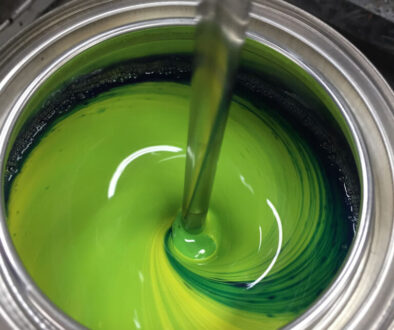Understanding the Benefits of Cationic Resins

When it comes to acrylic resins, the most common and widely used resins tend to be anionic. We’ve discussed in previous articles how anionic and cationic polymers differ in their properties and uses.
While both are useful for paint primers and inks, anionic resins are easier to develop since there aren’t many monomers that can complete cationic polymerization. As a result, cationic acrylic polymers have historically been overlooked.
At Gellner, we’ve found a lot of value in cationic resins. Most of the surfaces in the world that are painted or printed on are anionic. In other words, they have a negative charge. As a result, cationic polymers–which have a positive charge–can give primers and inks better performance.
Not only do cationic acrylic polymers provide better adhesion, but pigments can also just be ground into Gellner Industrial’s resins without any extra steps. Cationic resins can give your products better performance, and save you time and money.
Cationic Resins in Printing Inks
Resins are added to various types of printing inks to improve their flow, gloss, and solubility. No matter the ink’s application, resins are essential to producing a sharp image, increasing the ink’s adhesion to the surface, and resisting environmental conditions, indoors and out.
Cationic resins are especially useful for printing inks. Due to their cationic nature, they provide superior adhesion to almost any surface, from shirts to wallpaper and plastic bags to beverage containers and newspapers. They also give the final products better resistance to various environmental conditions because of their positive charge, allowing for longer-lasting quality overall.
Gellner’s cationic resins can also improve the ink’s performance in gloss, flow, hold-out (so that the ink doesn’t dry on the screen), and solubility. Whether the ink is for screen printing, flexographic printing, or gravure printing, our resins are excellent for improving the final product’s overall quality.
Some of the cationic resins that Gellner has developed for high-performance printing inks are:
- Ottopol K-633
- Ottopol K-362
- Ottopol K-65
Cationic Resins in Paint Primers
As we’ve mentioned before, most of the surfaces in the world are anionic or have a negative charge. That also applies to surfaces, indoors and out, that are regularly painted.
Because of this property, cationic resins can improve a primer’s adhesion, as well as its alkali resistance and general environmental resistance. Whether it’s for interior or exterior primers, cationic resins can improve the primer’s adhesion, even to non-porous substrates, improve the paint’s resistance to stains without the need for extra additives, and much more.
Gellner has developed several cationic resins for paint primers. Our resins can not only improve performance and increase stain blocking, but some of them, like our newest product Ottopol KO can also block many types of stains that other polymers can’t, like tannin oils, water-based markers, and fungal growth.
Some examples of Gellner’s cationic resins for paint primers are:
- Ottopol K- 12T
- Ottopol KO
Gellner Industrial is a premier acrylic resin manufacturer
If you’re looking for the best resins to improve the performance of your printing inks or paint primers, then check out our website today. Gellner Industrial, LLC is the leader in acrylic resins and polymers for various industries, and we are consistently improving and expanding our expertise in many types of acrylic emulsion polymers. For more information on the cationic resins that we manufacture, visit our website here.


